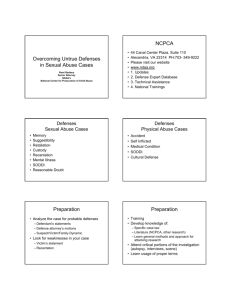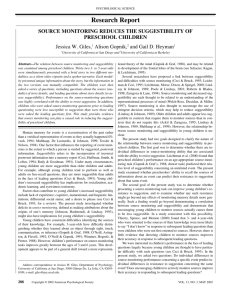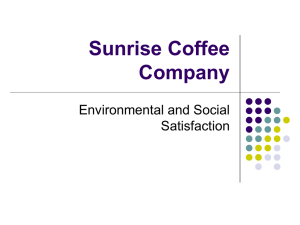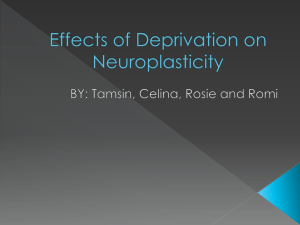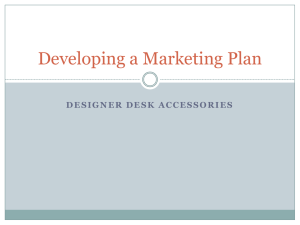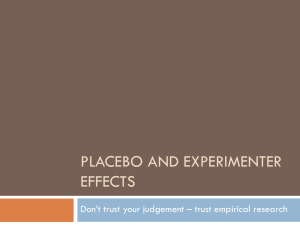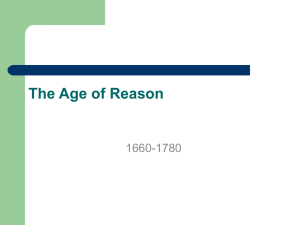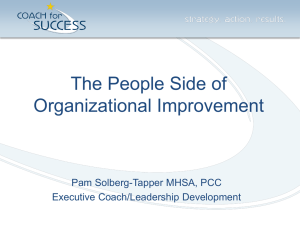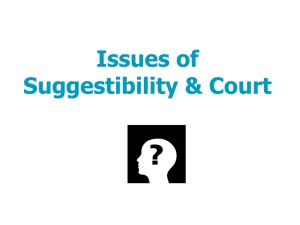The Influence of Experimenter Status on Suggestibility
advertisement
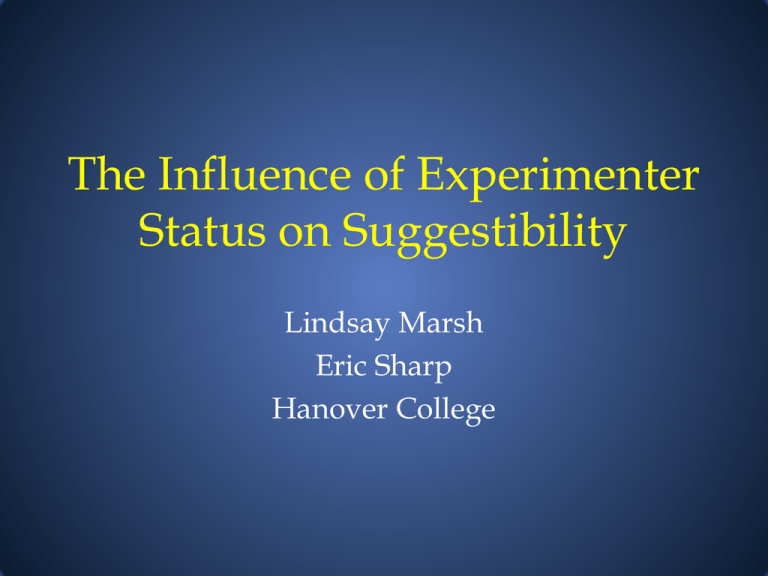
The Influence of Experimenter Status on Suggestibility Lindsay Marsh Eric Sharp Hanover College Eyewitness Testimonies in Court • In the U.S. court system, eyewitness testimonies are often regarded as reliable evidence • Deposition phase, followed by trial phase • Lawyers for both sides are present at both phases • Jury is only present for trial phase • Leading questions during the deposition phase can manipulate testimonies given in trial phase What is Suggestibility? • Testimonies can be altered because of suggestibility • Suggestibility is being influenced by or accepting the statements of others • One way to measure suggestibility is by the presence of false memories False Memories • False memories occur when people recall something that was not presented to them • Manipulation of wording in questioning can elicit false memories • Car crash study (Loftus & Palmer, 1974) – About how fast were the cars going when they _____ each other? Relationship between Experimenter Status and Suggestibility • When children are questioned by other children, their suggestibility decreases (Ceci, Toglia, & Ross, 1987) • Perceived authority influencing recall of memories (Paddock & Terranova, 2001) – Expert vs. Non-expert conditions Suggestibility and Personality Variables • More compliant individuals are vulnerable to leading questions (Richardson & Kelly, 2004) • Emotional children were more suggestible (Chae & Ceci, 2005) • Big Five Factors of PersonalityAgreeableness and Neuroticism Suggestibility in Eyewitness Testimonies • Changes can occur from deposition phase to trial phase in eyewitness testimonies • These changes are influenced by: – Leading questions vs. neutral questions – Status of interviewer – Personality traits of interviewee Our Hypotheses • Participants are more suggestible when asked leading questions by the experimenter that has high status • Participants with high scores of Agreeableness and Neuroticism have overall higher suggestibility Method: Participants • All participants (N = 42) were undergraduate students at Hanover College • 71.4% female (n = 30), 28.6% male (n = 12) • Average age was 19.6 years old, the ages ranged from 18 to 22 years old • 90.5% were Caucasian (n = 38), 2 African American, 1 Asian, and 1 multi-racial Method: Creating Groups • We had separate sign up sheets for each experimenter • Randomly assigned to question type Student Experimenter Neutral Questions 11 participants Student Experimenter Leading Questions 14 participants Professor Experimenter Neutral Questions 6 participants Professor Experimenter Leading Questions 11 participants Method: Video • To stage an event that can be reported later, we created a 60 second video clip. Method: Video • In the video, a coffee mug gets accidently knocked off of the desk. Method: Retrieval Phase I • Experimenter read open-ended questions – Leading vs. Neutral – Question repeated twice • Participants wrote down responses • Simulated deposition phase Method: Retrieval Phase I • Example questions – Neutral questions • How did the man react when the coffee mug landed on the floor? – Leading questions • How did the man react when the coffee mug smashed onto the floor? Intervening task • Participants watched two episodes of the Nickelodeon cartoon Doug – Lasted approximately 23 minutes • Simulated time between deposition and trial • Mentally engage in something other than video clip Retrieval Phase II • Participants asked to fill out recall worksheet – Open-ended neutral questions answered on an 8-point Likert scale – “How would you assess the state of the coffee mug at the end of the video clip?” • Simulated trial phase Method: Scales • Big Five personality assessment (focus on Agreeableness and Neuroticism) – Openness to Experience – Conscientiousness – Extraversion – Agreeableness – Neuroticism • Demographic Questionnaire • Debriefing Damage to the Coffee Mug 5 4.5 4 3.5 3 2.5 2 1.5 1 Neutral Leading Question Type Marginally Significant Main Effect for Question Type, F(1, 45) = 3.01, p = 0.09 Damage to the Coffee Mug 5 4.5 4 3.5 3 2.5 2 1.5 1 Low Status High Significant Main Effect for Status, F(1,45) = 4.34, p = 0.04 Damage to Coffee Mug 5 4.5 Neutral Question 4 Leading Question 3.5 3 2.5 2 1.5 1 Low Status High 2 x 2 between-subjects ANOVA No significant interaction. Damage to the Coffee Mug 5 4.5 4 3.5 3 2.5 2 1.5 1 Low High Openness to Experience Significant Main Effect for Openness to Experience, F(1,45) = 5.99, p = 0.02 Discussion: Question Type • We found a main effect for question type – Leading question condition produced more perceived damage for mug than neutral question condition • Consistent with Loftus and Palmer (1974) car crash study Discussion: Status • We found a main effect for status – High status condition produced more perceived damage for mug than low status condition • Why main effect, but no interaction? – Higher status could imply greater perceived severity of event Discussion: Openness to Experience • We found a main effect for Openness to Experience – Higher scores of Openness to Experience produced higher perceived damage to mug • Why main effect, but no interaction? – On our assessment, Openness to Experience encompasses imaginative qualities – Higher imaginative traits may produce more embellished/damaged memory of mug Personality Variables Openness to Experience Conscientiousness Extraversion Agreeableness Neuroticism Imaginative Organized Talkative Sympathetic Tense Intelligent Thorough Assertive Kind Anxious Original Efficient Active Soft-hearted Nervous Insightful Responsible Energetic Warm Worrying Clever Practical Outgoing Generous Self-pitying Discussion: Implications of Findings • Small changes in question type (‘smashed’ vs. ‘landed’) can elicit false memories • Status facilitates higher levels of suggestibility – Age – Clothing/appearance – Expertise – Gender – Occupation – Perceived intelligence/authority Limitations • Time between retrieval phase 1 & 2 • Possible variables within status: – Age – Gender – Occupation – Eyes that pierce through your soul • Small, homogeneous sample Future Research • Investigate influence of time – Our study used a delay period of about 25 minutes – Other studies of this type have used delay periods ranging from days to weeks • Explore variables of status as related to suggestibility

